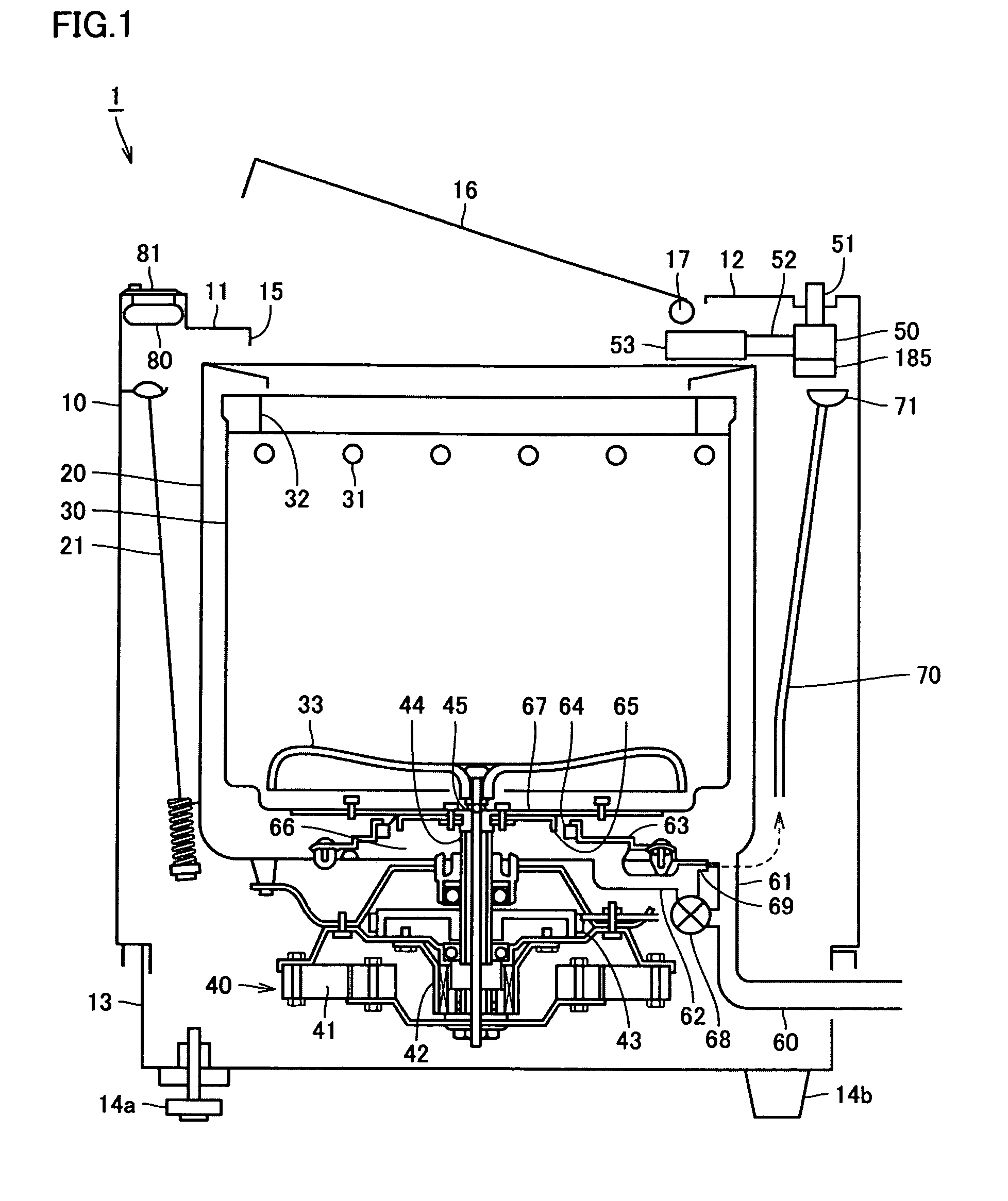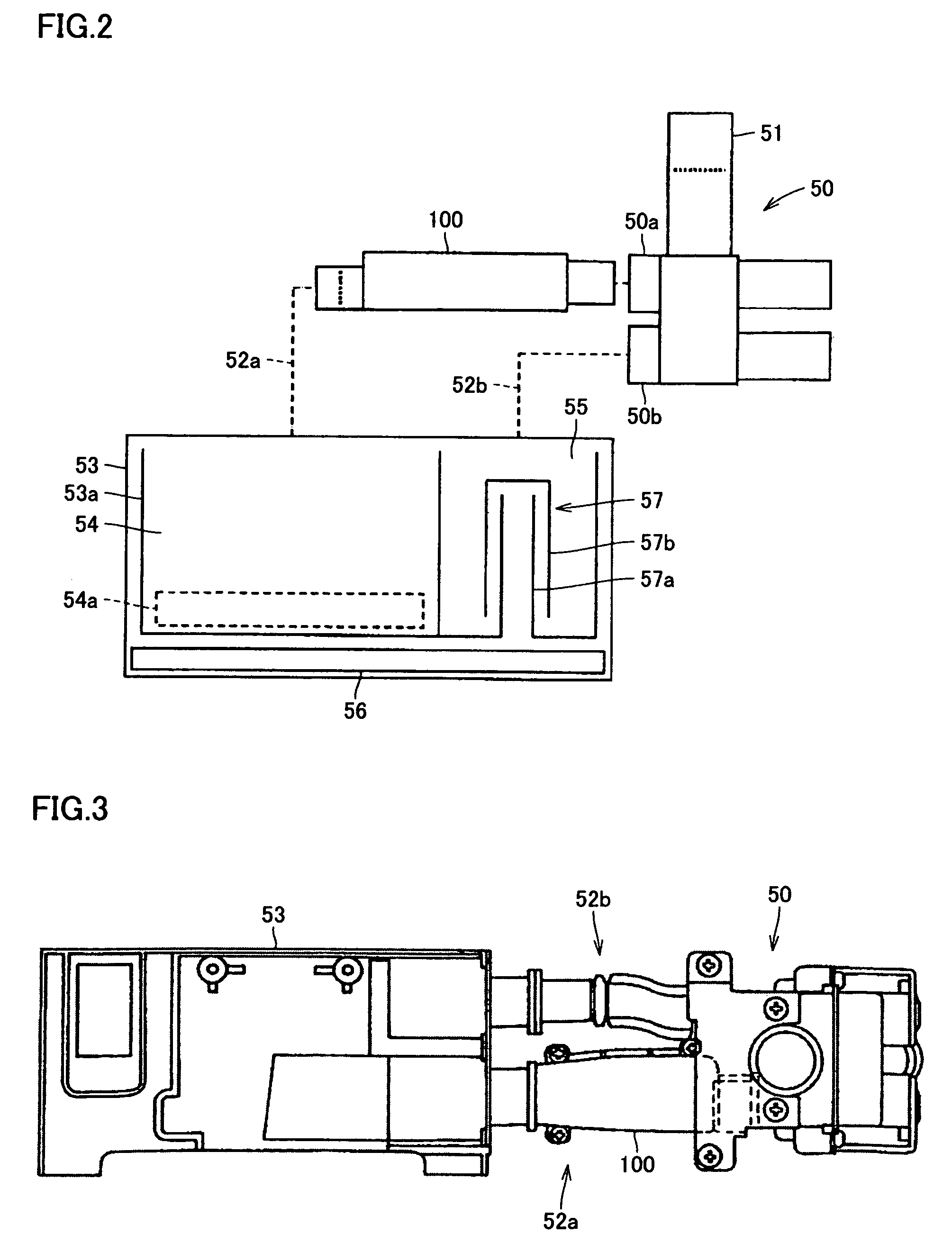Washing machine
a washing machine and washing machine technology, applied in the field of washing machines, can solve the problems of limited microorganism propagation, stained washing, and user's visual unpleasant feeling, and achieve the effects of shortening the driving time, reducing the amount of water, and effectively exerting sterilizing
- Summary
- Abstract
- Description
- Claims
- Application Information
AI Technical Summary
Benefits of technology
Problems solved by technology
Method used
Image
Examples
embodiment 1
[0036]Referring to FIG. 1, the following description will discuss an embodiment of a washing machine as embodiment 1 of the present invention.
[0037]First, a structure of a washing machine of the present embodiment is explained. FIG. 1 is a longitudinal cross-sectional view showing the entire structure of a washing machine 1.
[0038]As shown in FIG. 1, supposing that a left side of the figure corresponds to a front face of the washing machine 1 and that a right side of the figure corresponds to a back face thereof, a back panel 12, made of synthetic resin, is installed in an overlapping manner on an upper face plate 11 made of synthetic resin in the same manner on the back face side of the washing machine 1. The back panel 12 is secured onto an outer case 10 or the upper face plate 11 with screws. A base 13 made of synthetic resin is superposed on a bottom face opening section of the outer case 10. The base 13 is secured onto the outer case 10 with screws. Here, in FIG. 1, the above-me...
embodiment 2
[0087]FIG. 7 shows an example in which the control process in the “tank washing course” is different from that of the above-mentioned embodiment 1 as embodiment 2 of the present invention. In this embodiment, as shown in FIG. 7, after the washing tank 30 has started the tank rotation at a low speed, silver ion-containing water is supplied to the washing tank 30. The other processes are the same as those of embodiment 1.
[0088]By carrying out the tank washing course in accordance with the present embodiment, unbalance that tends to occur in the initial state of the tank rotation can be restrained. When water is held in the washing tank upon starting the tank rotation, load unbalance tends to occur in the entire washing tank due to the weight of the water, resulting in a failure in the driving. This is referred to as “unbalance”. However, in the case when, after the tank rotation has been started prior to the supply of water, the water is then supplied, the tank rotation can be maintai...
embodiment 3
[0089]FIG. 8 shows another example in which the control process in the “tank washing course” is different from that of the above-mentioned embodiment 1 as embodiment 3 of the present invention. In this embodiment, as shown in FIG. 8, first, silver ion-containing water having a sterilizing function is supplied to the washing tank 30, and after the washing tank 30 has started the tank rotation at low speed, the silver ion-containing water is again supplied to the washing tank 30. The other processes are the same as those of embodiment 1.
[0090]In embodiment 1, although no unbalance occurred when 10 L of water was held in the washing tank, unbalance occurred when 15 L of water was held in the washing tank. In other words, depending on the amount of water held in the washing tank, the possibility of unbalance is raised. In embodiment 3, in the case when a certain amount of water is required due to the size of the washing tank, a comparatively small amount of silver ion-containing water i...
PUM
 Login to View More
Login to View More Abstract
Description
Claims
Application Information
 Login to View More
Login to View More - R&D
- Intellectual Property
- Life Sciences
- Materials
- Tech Scout
- Unparalleled Data Quality
- Higher Quality Content
- 60% Fewer Hallucinations
Browse by: Latest US Patents, China's latest patents, Technical Efficacy Thesaurus, Application Domain, Technology Topic, Popular Technical Reports.
© 2025 PatSnap. All rights reserved.Legal|Privacy policy|Modern Slavery Act Transparency Statement|Sitemap|About US| Contact US: help@patsnap.com



